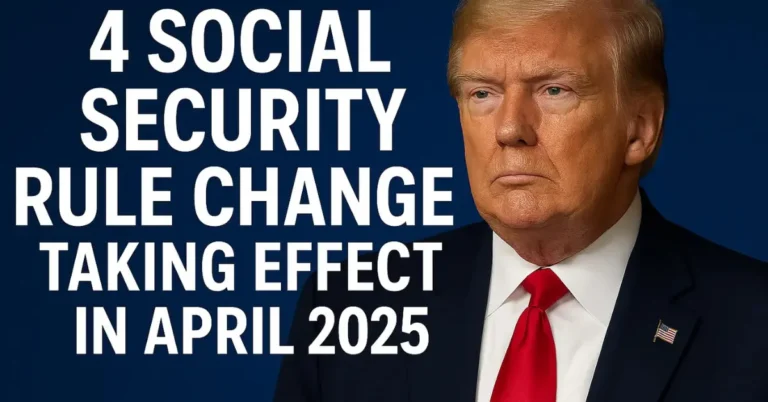2025 VA Disability Compensation Rates: Key Updates and Payment Details
The Department of Veterans Affairs (VA) has announced a 2.5% increase in disability compensation rates for 2025. This increase, known as the Cost of Living Adjustment (COLA), aims to provide financial relief for veterans with service-related disabilities, helping them manage rising costs for essentials like housing and healthcare.
What Are the 2025 VA Disability Compensation Rates?
The VA disability compensation rates for 2025 vary depending on the veteran’s disability rating, which ranges from 10% to 100%. Veterans with higher ratings and those with dependents receive higher monthly benefits. Below are the updated rates for 2025:
| Disability Rating | 2025 Monthly Rate |
|---|---|
| 10% | $175.51 |
| 20% | $346.95 |
For veterans with more severe disabilities, especially those with dependents, the rates are significantly higher:
Rates for 30% to 60% Disability Without Children
| Dependent Status | 30% | 40% | 50% | 60% |
|---|---|---|---|---|
| Veteran Alone | $537.42 | $774.16 | $1,102.04 | $1,395.93 |
| Veteran with Spouse Only | $600.97 | $859.24 | $1,208.64 | $1,524.05 |
| Veteran with One Parent | $588.67 | $841.81 | $1,187.11 | $1,498.43 |
| Veteran with Two Parents | $639.92 | $909.46 | $1,272.19 | $1,600.93 |
| Additional for A/A Spouse | $58.43 | $77.90 | $97.38 | $116.85 |
Rates for 70% to 100% Disability With Children
| Dependent Status | 70% | 80% | 90% | 100% |
|---|---|---|---|---|
| Veteran with One Child | $1,858.61 | $2,158.66 | $2,426.08 | $3,974.15 |
| Veteran with Spouse and Child | $2,017.49 | $2,340.09 | $2,630.06 | $4,201.34 |
| Veteran with Two Parents | $2,098.46 | $2,431.31 | $2,733.58 | $4,317.03 |
How VA Disability Compensation is Calculated
The VA uses a detailed rating system to assess the severity of a veteran’s disability, which can range from 10% to 100%. Veterans with multiple disabilities receive a combined rating. Higher percentages signify more severe disabilities, resulting in higher compensation.
Veterans with dependents, such as spouses, children, and parents, may be eligible for additional compensation. For example, a veteran with a 70% disability rating and a spouse will receive $1,907.81 per month, but the amount increases if they have children or a spouse requiring Aid and Attendance.
Eligibility Criteria for VA Disability Compensation
Veterans must meet the following criteria to qualify for disability compensation:
- Service Connection: The disability must be linked to military service.
- Discharge Status: Veterans must have been discharged under conditions other than dishonorable.
- Medical Documentation: Medical records must support the disability claim.
Why the 2025 COLA Increase is Crucial
The 2.5% COLA adjustment ensures that VA benefits keep pace with inflation, helping veterans manage increased costs in housing, healthcare, and daily expenses. Without regular adjustments, the value of these benefits would diminish over time.
How to Apply for VA Disability Compensation
Veterans can apply for compensation through the Department of Veterans Affairs by completing VA Form 21-526EZ. Along with this form, applicants need to submit:
- Service Records: Proof of military service.
- Medical Records: Documentation of the disability.
- Proof of Disability: Evidence that links the disability to military service.
The application process can take several months, and the VA may request additional medical exams to verify the claim.
Maximizing VA Benefits
Veterans can maximize their benefits by regularly reviewing their disability rating and reporting any changes in their condition. For instance:
- Appeal Incorrect Ratings: Veterans can file an appeal if they believe their rating is inaccurate.
- Report Dependents: Veterans with dependents should report them to receive higher compensation.
- Seek Help from VSOs: Accredited Veterans Service Officers (VSOs) can assist with filing claims, appealing decisions, and managing benefits.
When Will the 2025 VA Disability Payments Begin?
The new VA disability compensation rates will take effect on December 1, 2024. Veterans will see the updated amounts in their December payments. Payments are generally made via direct deposit, ensuring timely and secure delivery.
Final Thought
In conclusion, the 2025 VA disability compensation rates reflect the rising costs faced by veterans, ensuring that they receive the financial support they deserve. Veterans are encouraged to stay informed, review their benefits, and take action to maximize their compensation.
FAQs
What is the 2025 COLA for VA disability compensation?
The COLA increase for 2025 is 2.5%, adjusting the monthly compensation rates for veterans and their families.
How do I apply for VA disability compensation?
You can apply by submitting VA Form 21-526EZ along with your medical records and service documents.
What should I do if my disability rating is incorrect?
If you believe your rating is inaccurate, you can file an appeal with the VA.
Will all veterans receive the same compensation rates?
No, the rates vary depending on the veteran’s disability rating, dependent status, and other factors.
How can I maximize my VA disability benefits?
Veterans can maximize benefits by appealing incorrect ratings, reporting dependents, and seeking help from VSOs.
What Additional Compensation is Available for Dependents?
Veterans with a disability rating of 30% or higher can receive additional compensation for dependents, including spouses, children, and dependent parents. The amount varies based on family size and dependency status, ensuring veterans with larger families receive increased monthly support.
What Are the Common Mistakes Veterans Make When Filing VA Disability Claims?
Common mistakes veterans make when filing VA disability claims include submitting incomplete medical records, failing to clearly link their condition to military service, missing deadlines, and not providing enough evidence to support the severity of their disability. These errors can delay or reduce benefits.
Is VA Disability Compensation Tax-Free?
Yes, VA disability compensation is tax-free at both the federal and state levels, ensuring veterans receive their full benefits without deductions for income taxes.







